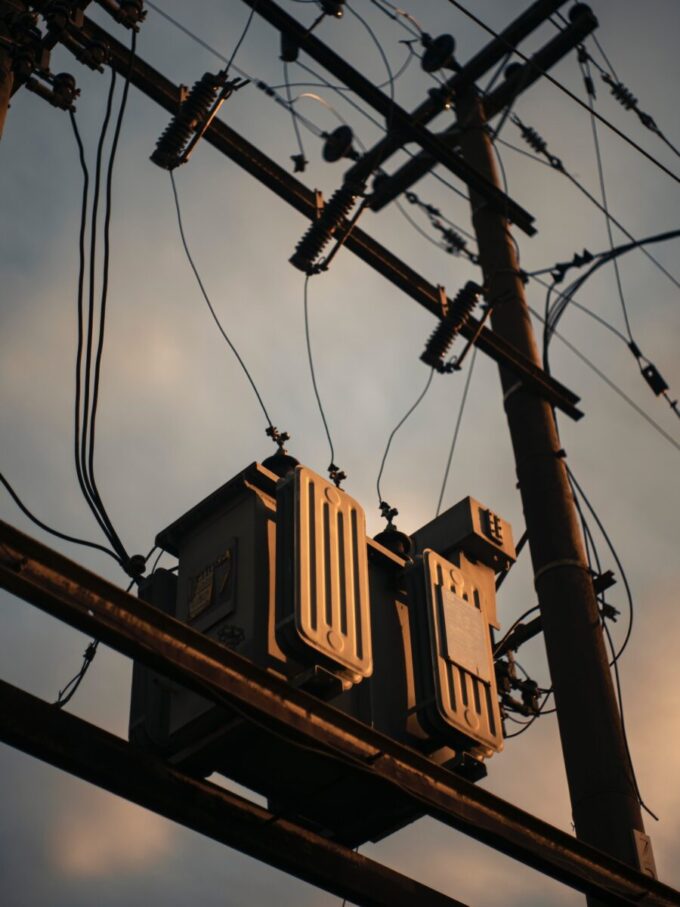electrical transformers are fundamental devices in the field of electrical engineering, enabling efficient transmission and distribution of electrical energy.
An electrical transformer is a vital component in the field of electrical engineering. It plays a crucial role in the generation, transmission, and distribution of electrical energy. Transformers are designed to transfer electrical energy from one circuit to another by means of electromagnetic induction, with minimal loss of power. In this guide, we will explore transformers from basic to advanced levels, covering their principles, types, construction, operation, and applications.
Basic Principles of Electrical Transformers:
Electromagnetic Induction: Transformers operate on the principle of electromagnetic induction, discovered by Michael Faraday. When the current in one coil (primary winding) changes, it induces a voltage in another coil (secondary winding) through a shared magnetic field.
Mutual Inductance: Mutual inductance (M) is a measure of how effectively the primary winding induces voltage in the secondary winding. It depends on the number of turns in the coils and the magnetic properties of the core material.
Transformer Components:

Primary Winding: The primary winding is connected to the source of electrical power and is responsible for initiating the electromagnetic induction process.
Secondary Winding: The secondary winding is connected to the load and receives the induced voltage from the primary winding.
Core: The core is typically made of laminated iron or other magnetic materials. It serves to concentrate the magnetic flux and enhance the transformer’s efficiency.
Types of Electrical Transformer
Types of Electrical Transformers:
Step-Up and Step-Down Transformers: Step-up transformers increase the voltage from the primary to the secondary winding, while step-down transformers decrease the voltage. This allows for efficient transmission and distribution of electricity.
Isolation Transformers: These transformers electrically isolate the primary and secondary windings, providing protection against electrical shocks and interference.
Auto Transformers: Auto transformers have a single winding with a tap at some point along it. They are used for voltage regulation and can be either step-up or step-down.
Distribution Transformers: These transformers are commonly used in power distribution systems to step down high-voltage power to lower voltage levels for residential and commercial use.
Transformer Operation: with load & No load Condition
No-Load Condition: When the transformer is connected to the power source but no load is connected to the secondary winding, it is in a no-load condition. In this state, the transformer primarily experiences core losses, such as hysteresis and eddy current losses.
Load Condition: When a load is connected to the secondary winding, current flows through it. The transformer transfers electrical power from the primary to the secondary winding. Some power is lost as copper losses due to the resistance of the windings.
Efficiency: Transformer efficiency is the ratio of output power to input power. It is maximized by reducing core and copper losses.
Advanced Electrical Transformer Concepts:
Three-Phase Transformers: These transformers are used in three-phase electrical systems, commonly found in industrial and commercial applications.
Instrument Transformers: Current transformers (CTs) and voltage transformers (VTs) are used for measurement and protection in power systems.
Resonant Transformers: These transformers are designed for high-frequency applications and are often used in electronics and telecommunications.
Applications:
Transformers are used in various applications, including:
Power generation, transmission, and distribution
Voltage regulation
Electrical isolation
Electrical measurement and protection
Electronic devices and appliances
what is an electrical transformer box
An electrical transformer box, often simply called a transformer box or electrical transformer, is a device used in electrical power systems to change the voltage level of electricity. Its primary purpose is to either step up or step down the voltage of electricity as needed to transmit and distribute electrical power efficiently.
Here’s how it works:
Step-Up Transformer: This type of transformer increases the voltage of electricity. It has more turns in its secondary coil than in its primary coil. Step-up transformers are commonly used at power plants to increase the voltage for long-distance transmission to reduce energy loss during transmission.
Step-Down Transformer: Conversely, a step-down transformer reduces the voltage of electricity. It has fewer turns in its secondary coil than in its primary coil. These transformers are employed in distribution substations to lower the voltage to levels suitable for residential and commercial use.
Transformer boxes are usually housed in metal enclosures or boxes for safety and protection. They play a crucial role in delivering electricity from power generation sources to homes, businesses, and industries while ensuring that the voltage is appropriate for various applications. Transformer boxes are commonly found on utility poles, in electrical substations, or within buildings.
“What is an electrical transformer made of?”
Electrical transformers are typically made of the following main materials:
Iron Core: The core of a transformer is usually constructed from laminated sheets of high-quality silicon steel. This core provides a low-reluctance path for the magnetic flux generated in the transformer, which is essential for efficient energy transfer.
Copper or Aluminum Windings: The primary and secondary coils of a transformer are made from either copper or aluminum wire. These conductive materials carry the electrical current and facilitate the transfer of electrical energy from one coil to the other.
Insulation Materials: Various insulating materials are used to separate the windings and prevent electrical breakdown. Common insulation materials include paper, oil, or synthetic materials like Mylar or Nomex.
Oil or Liquid Dielectric: Many transformers are filled with a dielectric fluid, often mineral oil, which helps in cooling and insulation. This oil helps dissipate heat generated during operation and prevents arcing between windings.
Tank and Enclosure: Transformers are housed in a tank or enclosure made of materials like steel or aluminum. This enclosure protects the internal components from environmental factors and provides structural support.
Bushings and Terminals: These are typically made of porcelain or other insulating materials and are used to connect external electrical conductors to the transformer’s internal windings.
Cooling Systems: Large transformers often incorporate cooling systems such as radiators or fans. These components can be made from various materials, including metals like aluminum or copper.
What is a Transformer in the context of machine learning and natural language processing?
A Transformer is a type of neural network architecture introduced in the paper “Attention is All You Need” by Vaswani et al. in 2017. It has since become a fundamental building block for various machine learning tasks, especially in natural language processing (NLP).
How does a Transformer work in simple terms?
A Transformer works by processing input data in parallel through a series of layers called “attention layers” or “self-attention layers.” These layers allow the model to weigh the importance of different parts of the input data when making predictions. This mechanism enables the model to capture complex relationships and dependencies in the data.
How does multi-head attention work in a Transformer?
Multi-head attention in a Transformer involves running the attention mechanism multiple times in parallel, each with different learned weight matrices. This allows the model to focus on different aspects of the input data simultaneously, capturing a richer set of relationships and patterns.
What are some famous Transformer-based models?
Popular Transformer-based models include BERT, GPT (Generative Pre-trained Transformer), RoBERTa, T5, and many more. These models have achieved state-of-the-art results in various NLP tasks and have spurred advancements in the field.
What happens to the secondary coil in a transformer when the primary coil is energized?
The changing magnetic field produced by the primary coil induces a voltage in the secondary coil through electromagnetic induction. This induced voltage causes an alternating current to flow in the secondary coil.
How is the voltage ratio determined in a transformer?
The voltage ratio in a transformer is determined by the ratio of the number of turns in the primary coil to the number of turns in the secondary coil. If the primary coil has more turns than the secondary coil, the transformer is called a “step-down” transformer, and it decreases the voltage. Conversely, if the secondary coil has more turns, it’s a “step-up” transformer, increasing the voltage.
What other factors affect the transformer’s operation?
Transformers are designed to be as efficient as possible, but they are not 100% efficient. Factors affecting their operation include core material, wire resistance, and magnetic losses. High-quality transformer cores use materials with low magnetic hysteresis and eddy current losses to maximize efficiency.
What is the working principle of an electrical transformer?
An electrical transformer operates on the principle of electromagnetic induction. It is a static device that can change the voltage level of an alternating current (AC) electrical circuit while keeping the frequency constant.
What are some common applications of transformers?
Transformers are used extensively in electrical power transmission and distribution systems to step up voltage for long-distance transmission (at power plants) and step down voltage for safer use in homes and industries. They are also found in various electronic devices, including chargers, power supplies, and audio equipment, to adapt voltage levels as needed.
Are Electrical transformers only used for changing voltage levels?
While changing voltage levels is their primary function, transformers can also be used for electrical isolation, impedance matching, and inductance modification in electronic circuits, making them versatile components in electrical and electronic systems.
What is a power transformer?
A power transformer is an electrical device used to transfer electrical energy between two or more circuits through electromagnetic induction. It is commonly used to step up or step down voltage levels in electrical systems.
How does a power transformer work?
A power electrical transformer works on the principle of electromagnetic induction. When an alternating current (AC) flows through the primary winding of the transformer, it creates a magnetic field. This magnetic field induces a voltage in the secondary winding, which is connected to the load. The ratio of turns in the primary and secondary windings determines the voltage transformation.
What are the main components of a power transformer?
The main components of a power electrical transformer include the primary and secondary windings, a core (usually made of laminated iron or other magnetic materials), and insulation materials to prevent electrical leakage and maintain isolation.
What are the different types of power transformers?
There are several types of power electrical transformers, including distribution transformers, power transformers, autotransformers, instrument transformers (such as current transformers and voltage transformers), and more. Each type serves a specific purpose in electrical systems.
What is the purpose of power transformers in the electrical grid?
Power electrical transformers play a crucial role in the electrical grid by facilitating the transmission and distribution of electricity. They help in stepping up voltage for long-distance transmission to reduce energy losses and stepping down voltage for safe distribution to homes and businesses.
What are the types of Electrical transformers?
There are various types of Electrical transformers, including power transformers, distribution transformers, instrument transformers (such as CTs and voltage transformers), and auto-transformers. Each type serves specific purposes in electrical systems based on their design and voltage transformation requirements.
What are the primary uses of electric transformers?
Electric transformers have several critical applications:
Voltage Transformation: They are used to increase or decrease the voltage level in power distribution systems, allowing electricity to be transmitted efficiently over long distances and used at various voltage levels in homes and industries.
Isolation: Transformers can electrically isolate one circuit from another, providing protection against voltage spikes and preventing unwanted electrical interactions.
Impedance Matching: In electronics, transformers are used for impedance matching, ensuring maximum power transfer between components like audio speakers and amplifiers.
Current Transformation: Some transformers are designed to transform current levels, such as current transformers (CTs), which are used for metering and protection in electrical systems.
Why is voltage transformation important?
Voltage transformation is crucial because it allows electricity to be generated at high voltages, which reduces energy losses during long-distance transmission. Then, at the local level, transformers step down the voltage to safer and usable levels for homes and businesses. This process ensures efficient and reliable electrical distribution
Are transformers used in DC (direct current) systems as well?
While transformers primarily work with alternating current (AC), DC systems use devices called “DC-DC converters” or “choppers” to achieve voltage transformation and regulation. These devices serve a similar purpose to transformers in AC systems but operate differently due to the absence of alternating current
What are the common types of transformers?
There are various types of transformers, including power transformers, distribution transformers, instrument transformers (such as CTs and voltage transformers), and auto-transformers. Each type serves specific purposes in electrical systems based on their design and voltage transformation requirements.
How does an electric transformer work?
: Transformers operate on the principle of electromagnetic induction. They consist of two coils of wire, known as the primary coil and the secondary coil, wound around a common core. When an alternating current (AC) flows through the primary coil, it generates a magnetic field in the core. This magnetic field induces a voltage in the secondary coil, which is proportional to the number of turns in each coil. By varying the number of turns in the coils, transformers can step up or step down the voltage.
-
SSC EXAMS 2026 GENERAL AWARENESS FOR UPCOMING EXAM
SSC EXAMS 2026 GENERAL AWARENESS FOR UPCOMING EXAM is a mock quiz […]
-
Class 9 Science Physics – Motion Chapter important Question Answers
Hello students, I hope you are preparing well for your respective examinations […]







I don’t think the title of your article matches the content lol. Just kidding, mainly because I had some doubts after reading the article.
Thanks for sharing. I read many of your blog posts, cool, your blog is very good.
Your article helped me a lot, is there any more related content? Thanks!
Thanks for sharing. I read many of your blog posts, cool, your blog is very good.
Your point of view caught my eye and was very interesting. Thanks. I have a question for you.
Your point of view caught my eye and was very interesting. Thanks. I have a question for you.